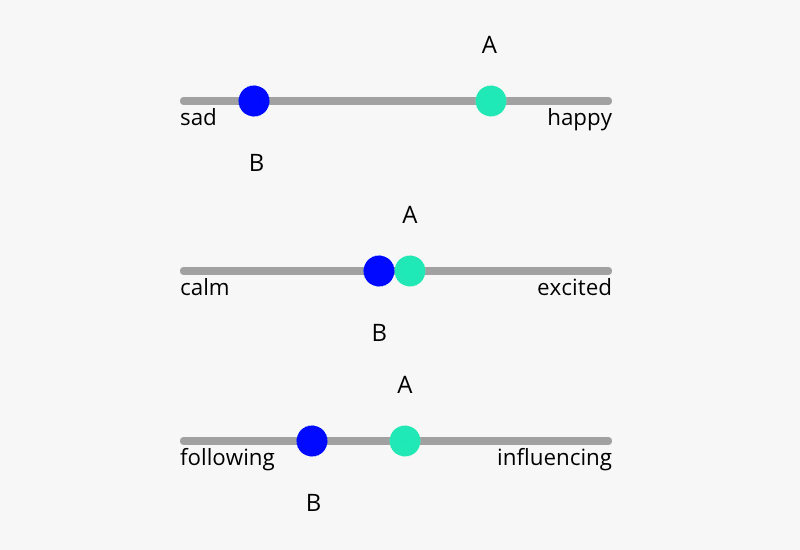Already back in 1977 James A Russell and Albert Mehrabian provided evidence that three independent and bipolar dimensions, pleasure-displeasure, degree of arousal, and dominance-submissiveness, are both necessary and sufficient to adequately define a person’s emotional state. Their research built further on Charles Osgood’s 1957 academic breakthrough relating to the semantic differential scales that help quantify the meaning of the sensory stimuli we process (including marketing content).

Should you be targeting women?
Fast forward over half a century and we find that an April 2022 study by Robert M. Chapman et al. deems Osgoods’ emotional scoring technique quite useful in assessing gender differences.
Apparently his research finds young women consistently rate emotional content more dramatic than young men do on all three of the independent Osgood dimensions. You may want to consider taking gender effects into account when testing the emotional score of your next campaign.
More “frisson” please!
Music and film are some of the more familiar ways capable of eliciting emotional goosebumps. When an emotional storyline manages to build up enough tension, setting the stage with dramatic cliffhanger audio or video, our reptilian brain sometimes overrides our thinking brain and automatically activates the ‘fight or flight’ physiological reaction, known as goosebumps.
When it comes to surprises, “to your emotional brain, there’s no such thing as a pleasant surprise,” says David Huron, author of Sweet Anticipation: Music and the Psychology of Expectation.
Seconds later, however, the thinking brain chimes in and does a cognitive reappraisal of the situation. It recognizes the high notes as music, interprets it as non threatening, and shuts down the emotional brain as the goosebumps fade away. This “violation of expectations” lends itself to what is referred to as “aesthetic tension”.
The phenomenon of getting pleasurable goosebumps while listening to music actually has its own name — frisson, a French word meaning “aesthetic chill.” Some researchers call it a “skin orgasm.”
Now That's Chilling
Let us now return to the question at hand: how can we marketers elicit “emotional goosebumps”, “skin orgasms” or “frission” with our branded content?
While there is obviously no silver bullet solution that will consistently flood your audience with dopamine, there are tools out there that might get you (and your brand) pretty close.
Moreover, the good news for marketers is that not only audio and video can elicit the intended effect, also your logos, color schemes, key product visuals, brand names, slogans, and even typefaces can contribute to a more emotionally captivating brand story.
Takeaway tools & tips
Researchers like John R. Doyle and Paul Bottomley from Cardiff University advise to work with unambiguous creative stimuli that elicit shared emotional meanings and focus on product visuals and logos. Brand names, proper nouns and slogans have weaker emotional meaning for people “unless circumstance press-gangs a once-nondescript name such as Presley, Bush, Gates, Disney or Ford into an altogether different kind of service”.
But you may have neglected your copy’s typeface. Although challenging because of the obvious variability in human judgement, the typeface you use, may for this very reason have the most potential for “aesthetic tension”, perhaps through the clever use of animation. It’s up to you to use the tools out there to understand and refine the implicit emotional associations with your brand.
Start scoring the emotional power of your content!
The bottom line: It’s time to start measuring your content’s emotional score on a consistent basis. And the good news is that there are user-friendly and reliable tools out there that offer just that functionality.
A spin-off from the KU Leuven neuroscience lab, Mindspeller allows you to try its “Content Tuner A/B” application which features emotional content scoring based on the state-of-the-art in human centric AI and implicit association testing.



